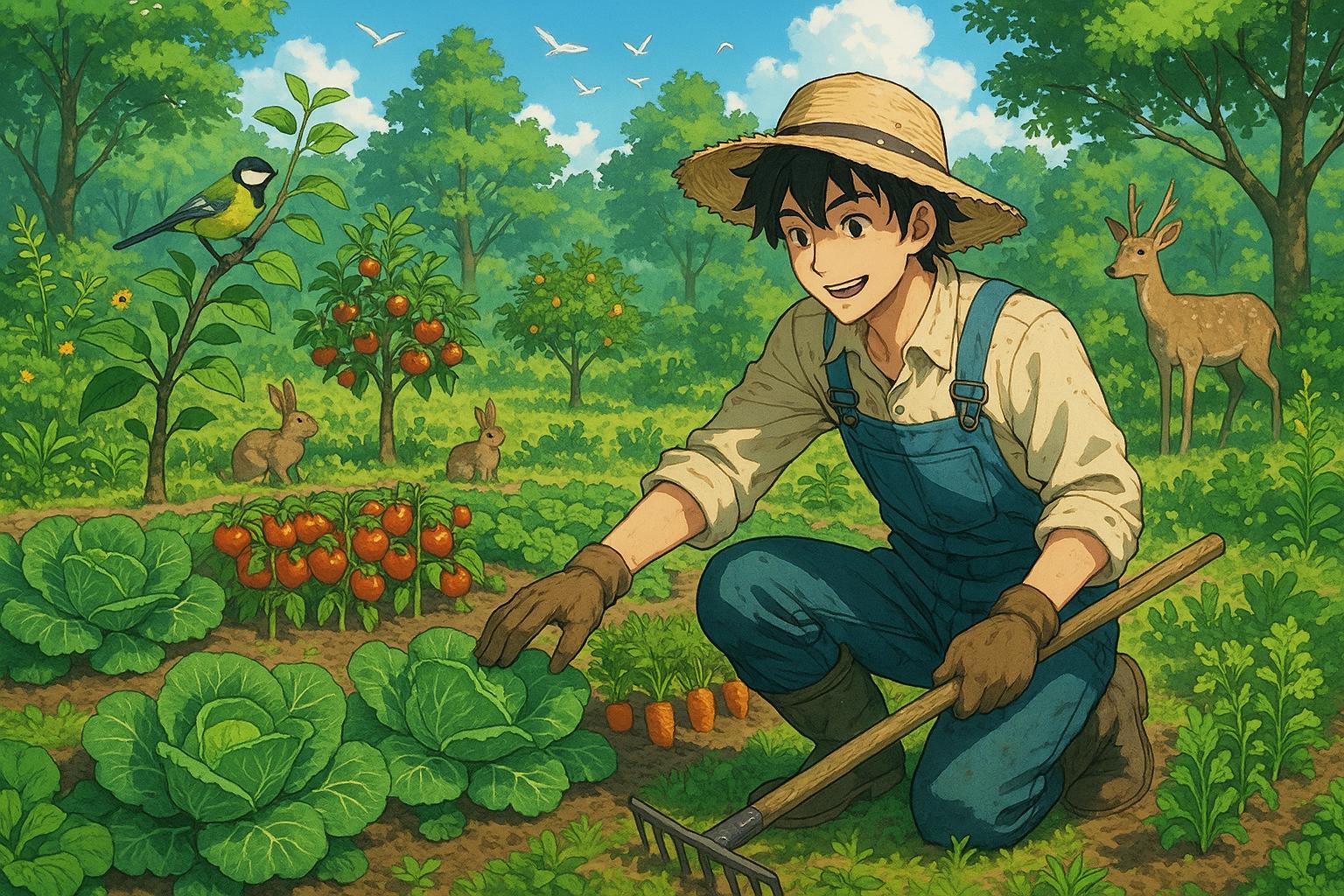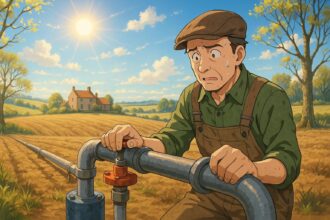Amid ongoing financial challenges, Suffolk farmer John Pawsey and others across England are adopting innovative regenerative techniques— from agroforestry to rewilding—demonstrating how ecological stewardship can coincide with sustainable food production.
The turn of the season in Suffolk has presented both challenges and opportunities for local farmers. John Pawsey, an organic farmer at Shimpling Park, reports a relatively productive period with winter crops successfully inter-row hoed and spring barley awaiting attention. This flurry of agrarian activity is echoed in traditional wisdom: “A dry May and a dripping June makes the farmer whistle a merry tune.” Yet, beneath this optimistic exterior lies an ongoing struggle for profitability that continues to shape the livelihood of farmers like Pawsey.
In exploring the broader landscape of agriculture, Pawsey reflects on more than just the crops in his field; he recounts recent excursions that underscore a shift towards regenerative farming practices across England. For instance, a visit to RSPB’s Hope Farm in Cambridgeshire illustrates successful integration of ecological responsibility within farming. Renowned as a model for wildlife-friendly agriculture, Hope Farm demonstrates that profitable food production can coexist harmoniously with biodiversity. According to initiatives like these, it is possible to enrich the land while still reaping economic benefits.
Pawsey’s encounter with pioneering agroforestry at Spains Hall in Essex reveals further innovative adaptations in farming. This project involves the strategic planting of around 10,000 nut and timber trees over five years within traditional arable and grazing fields. The goal is not only to produce sustainable food products but also to enhance biodiversity and improve soil health. Spains Hall’s efforts to incorporate biodiversity net gain highlight the growing recognition of ecological value in agriculture, particularly in areas under increasing residential development pressure.
The relationship between farming and biodiversity is also exemplified through Pawsey’s partnership with White’s Oats, a collaboration that underscores the importance of local support for ecological farming. With 35 local farmers in Northern Ireland participating in Environmental Stewardship programs, White’s commitment to sustainability has become a cornerstone for organic oat production. Engaging with consumers through transparency and sustainability initiatives fosters a deeper connection to food sources while reinforcing the imperative of environmentally friendly practices.
Moreover, the experience at Knepp Estate in West Sussex serves as a significant case study in the potential of rewilding. Starting from a pastoral landscape, Knepp is now a thriving ecosystem, demonstrating how land can regenerate through natural processes. The project aims not only to restore natural habitats but also to reintroduce native species like beavers, highlighting a forward-thinking approach to land management. In Knepp’s recent transformation, the disappearing hedged field boundaries have been replaced by a lush tapestry of wildlife, affirming the ecological richness that can flourish when nature is allowed to take the lead.
As farming grapples with issues of biodiversity loss and economic viability, these diverse initiatives reveal a broader movement towards regenerative farming that aligns agricultural practices with environmental stewardship. While the looming challenge of producing food for minimal financial return persists, the triumphs of collaborative, innovative approaches offer a promising path forward. Ultimately, the intertwining of agriculture with ecological health could redefine what it means to farm profitably in the 21st century, positioning farmers not just as food producers but as stewards of the land and custodians of biodiversity.
Reference Map
- Paragraph 1: [1]
- Paragraph 2: [5], [2]
- Paragraph 3: [4]
- Paragraph 4: [3]
- Paragraph 5: [7], [6]
- Paragraph 6: [1]
Source: Noah Wire Services
- https://www.fwi.co.uk/arable/farmer-focus/farmer-focus-rewilding-beavers-and-nut-trees – Please view link – unable to able to access data
- https://www.ft.com/content/7db49516-4863-45da-abe0-68066f66e275 – An article discussing the rise of regenerative farming practices among younger farmers, highlighting initiatives like Pitch Up, which connects new entrants with landowners, and the success of farms like New House Farm in Monmouthshire, where regenerative methods have led to increased biodiversity and reduced costs.
- https://www.whitesoats.co.uk/sustainability/farming-environment – White’s Oats collaborates with 35 local Northern Ireland farmers and 60 growers from the Republic of Ireland, promoting sustainable farming practices. Many of these farms participate in Environmental Stewardship programs, including managed habitats like wild bird cover and hedgerows, and hold LEAF accreditation, ensuring environmentally friendly farming methods.
- https://www.spainshallestate.co.uk/first-trees-in-pioneering-agroforestry-project-planted-at-spains-hall-estate – Spains Hall Estate in Essex is implementing a pioneering agroforestry scheme, planting around 10,000 nut and timber trees over five years. This approach integrates walnut and oak trees within arable and grazing fields, aiming to produce food products and timber sustainably while enhancing biodiversity and soil health.
- https://www.rspb.org.uk/helping-nature/what-we-do/influence-government-and-business/farming/hope-farm – Hope Farm, acquired by the RSPB in 2000, serves as a model for wildlife-friendly farming. The farm demonstrates how to run a successful business that produces food profitably while benefiting wildlife, showing that nature-friendly farming can be both profitable and beneficial for biodiversity.
- https://knepp.co.uk/knepp-estate/woods-and-trees/ – Knepp Estate in West Sussex has initiated a rewilding project, including planting black poplar trees to restore riparian habitats. This effort aims to regenerate species that have declined in England, contributing to the restoration of natural processes and biodiversity in the area.
- https://www.rewildingbritain.org.uk/rewilding-projects/knepp-castle-estate – Knepp Castle Estate in West Sussex has been dedicated to a pioneering rewilding project since 2001. The project focuses on enabling natural processes, with free-roaming grazing animals driving regeneration, leading to increased biodiversity and the reintroduction of species like beavers and white storks.













